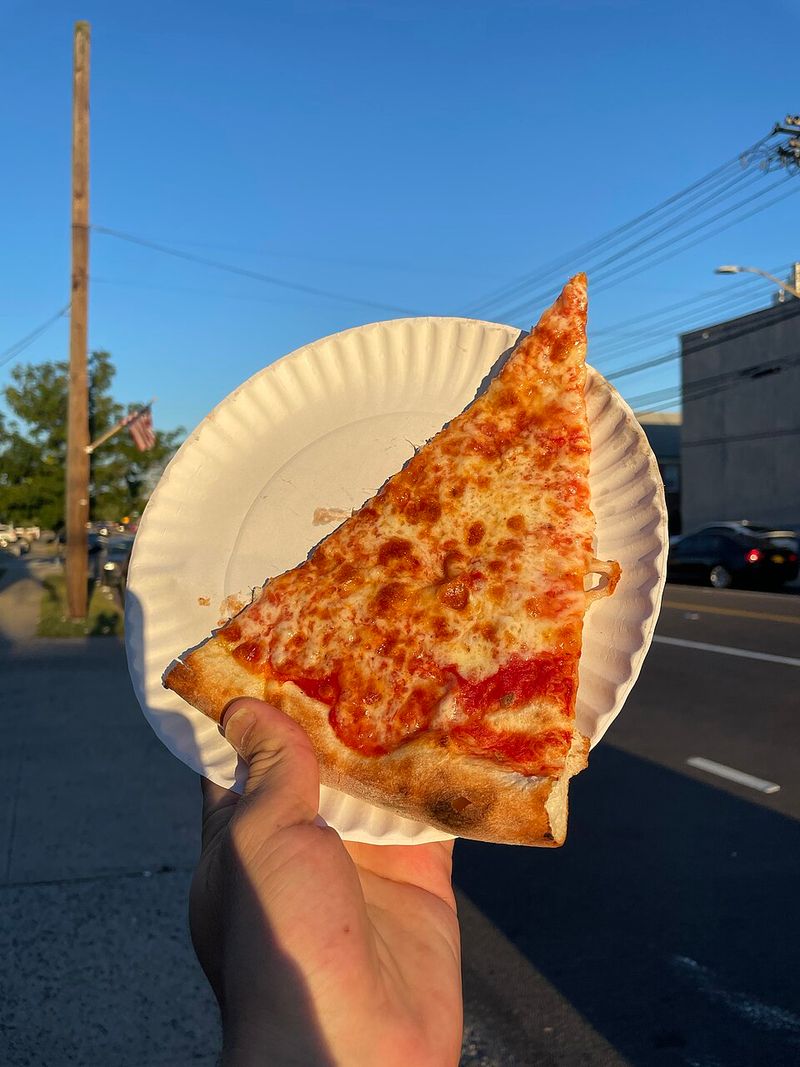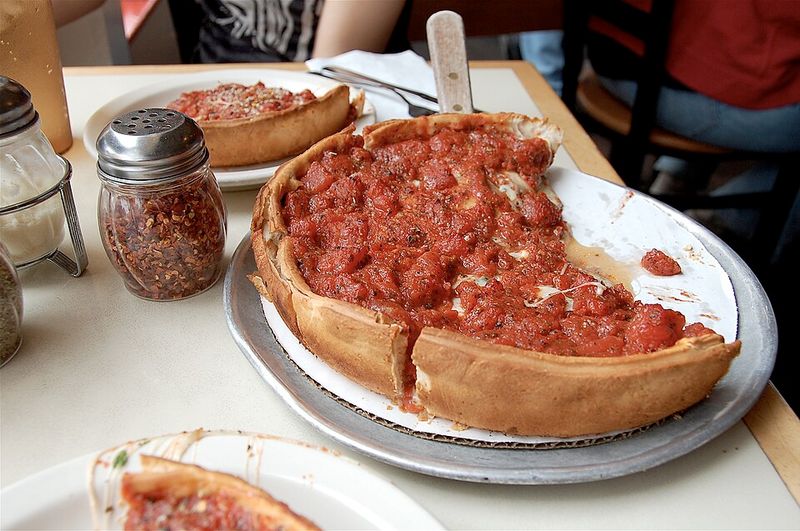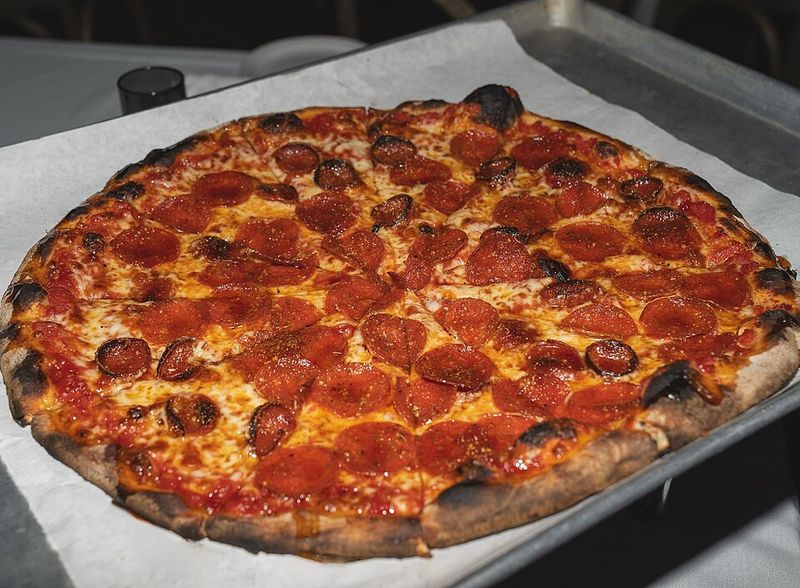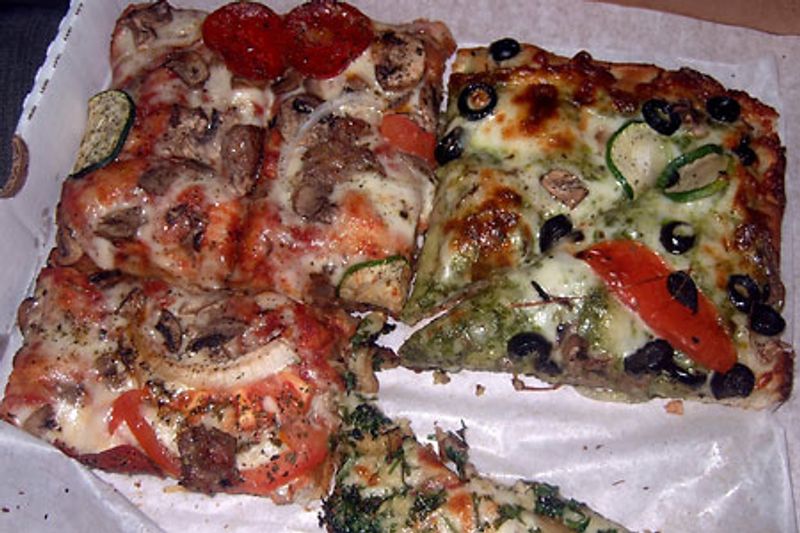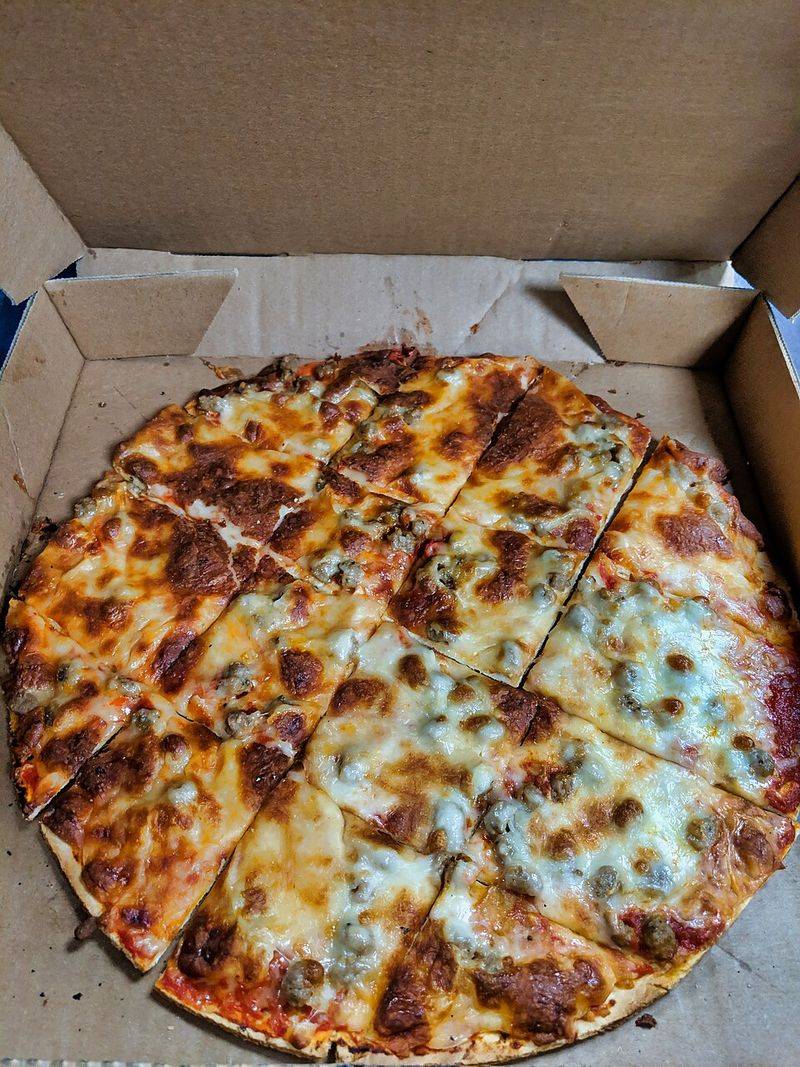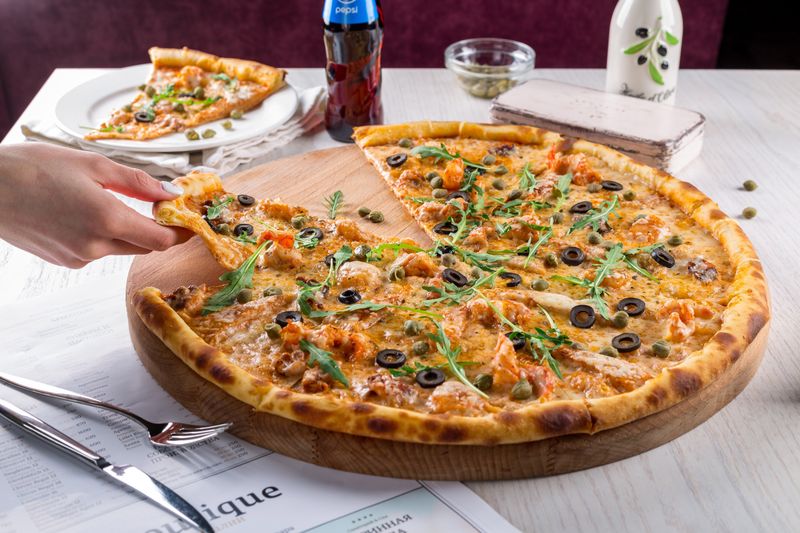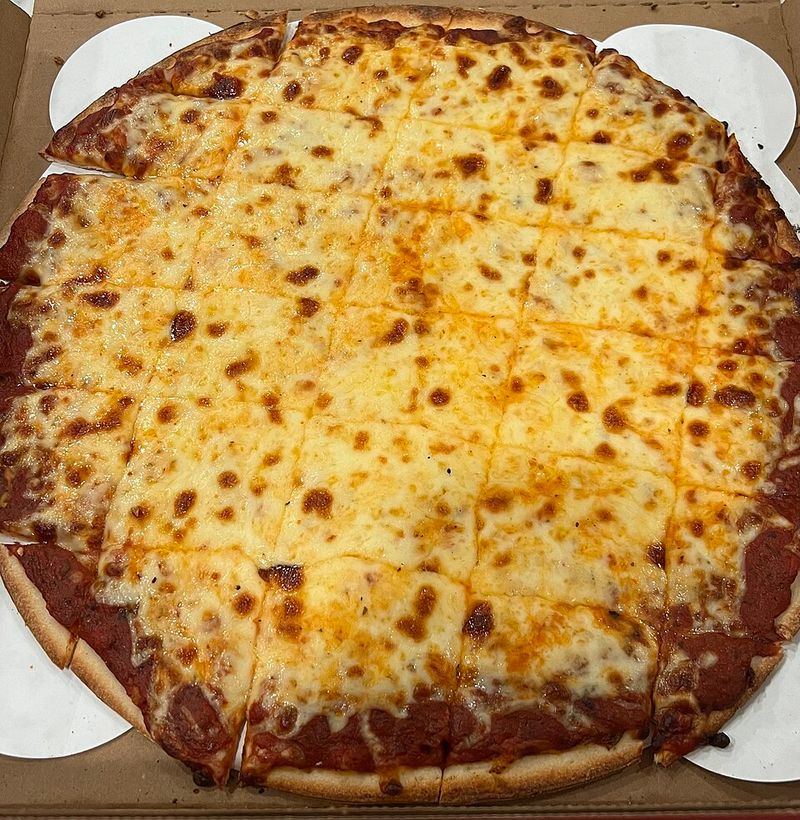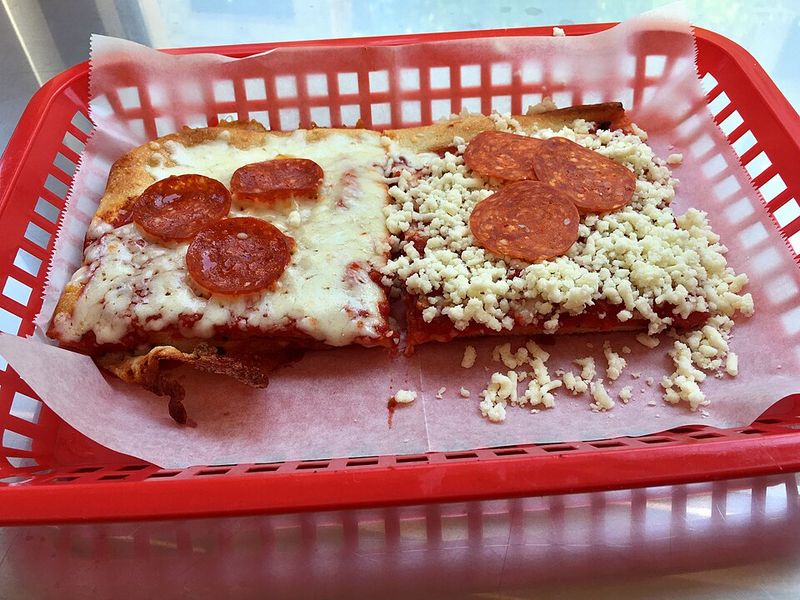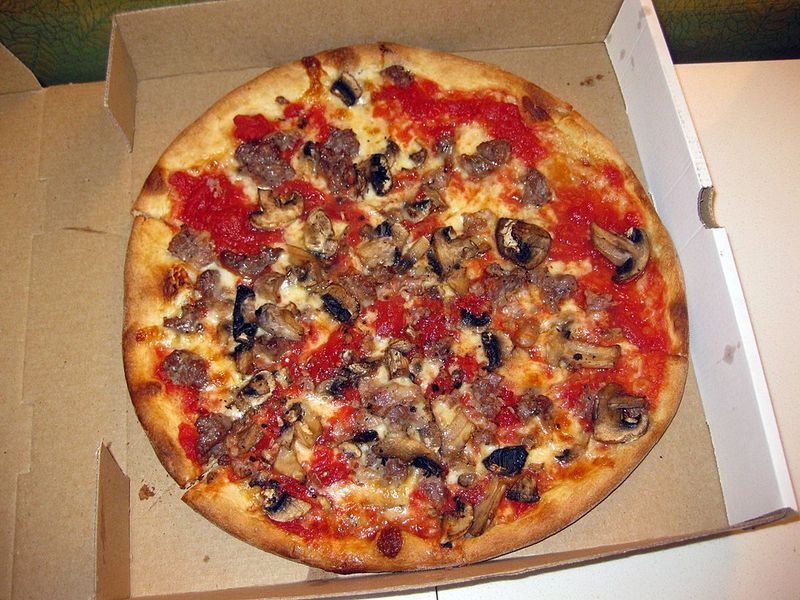Pizza has become as American as apple pie, with every region adding its own twist to this beloved dish. From thin and crispy to thick and doughy, each style tells a story about the people and places that created it. Chefs across the country have weighed in on which pizzas truly deserve legendary status, and the results might surprise you.
1. New York–Style Pizza
Walk down any street in Manhattan, and you’ll see someone folding a giant slice in half. That’s the New York way. This pizza features a hand-tossed dough that’s thin in the middle but gets thicker toward the edges.
The crust becomes sturdy enough to hold toppings but flexible enough to fold without breaking. Simple ingredients shine here: tangy tomato sauce and gooey mozzarella create the perfect balance.
Sold by the slice or as whole pies, this style has been copied nationwide since the early 1900s. It’s the pizza most Americans picture when they close their eyes and dream of cheese.
2. Chicago Deep-Dish Pizza
Forget everything you know about pizza—this is more like a savory pie. Chicago deep-dish turns tradition upside down with its thick, buttery crust pressed into a deep pan that resembles a cake tin.
Cheese goes directly on the dough, followed by meats and vegetables, then a generous layer of chunky tomato sauce crowns the top. Baking takes nearly 45 minutes because of all those glorious layers.
One slice can fill you up for hours. Locals also love tavern-style thin crust, but deep-dish remains the tourist favorite and the style that put Chicago pizza on the map worldwide.
3. Detroit-Style Pizza
Born in Motor City, this rectangular beauty gets baked in repurposed automotive drip pans. The result? Edges so crispy and caramelized they practically crunch like cheese chips.
Dough is thick and airy, almost focaccia-like, with Wisconsin brick cheese spread all the way to the corners. Sauce comes last, ladled in racing stripes across the top after baking.
The steel pans conduct heat perfectly, creating that signature crispy bottom and golden perimeter. What started as a working-class lunch in the 1940s has exploded into a nationwide phenomenon. Chefs love how the texture contrasts soft interior with crunchy edges.
4. New Haven Apizza
Pronounce it “ah-beetz” if you want to sound like a local. New Haven’s coal-fired ovens create a thin crust with dramatic char marks that add smoky flavor.
The dough gets chewy and blistered from intense heat, creating a texture unlike any other American pizza. Minimalist toppings let the crust shine—the famous white clam pie skips tomato sauce entirely.
Fresh clams, garlic, olive oil, and oregano create a masterpiece that seafood lovers worship. Frank Pepe’s and Sally’s Apizza have been battling for supremacy since the 1920s. Chefs respect how this style proves less can absolutely be more when technique is perfect.
5. Sicilian-Style Pizza
Grandma’s kitchen inspired this thick, pillowy pizza that feels like a warm hug. Baked in rectangular pans, the focaccia-like dough rises high and stays wonderfully soft inside.
Unlike crispy styles, Sicilian pizza embraces its doughy texture with pride. Olive oil gets worked into the dough and drizzled on top, creating golden spots.
Tomato sauce and mozzarella cover the surface generously, sometimes with onions or anchovies added. The “Grandma pie” variation uses thinner dough but keeps that homestyle, comforting vibe. Perfect for feeding a crowd, this style cuts into generous squares. It reminds people of Sunday dinners and family gatherings where food meant love.
6. St. Louis–Style Pizza
Cracker-thin and cut into squares—that’s how St. Louis does pizza. The unleavened crust shatters like a crisp cracker, creating a completely different eating experience from chewy New York slices.
Provel cheese, a processed blend of cheddar, Swiss, and provolone, melts into a gooey, tangy layer that locals swear by. Outsiders find it polarizing, but that’s part of the charm.
Sweet tomato sauce adds another unique twist. The “party cut” into small squares means everyone gets pieces with different topping ratios. Imo’s Pizza made this style famous, and it remains fiercely regional. Chefs appreciate how it breaks all the rules yet works perfectly.
7. California-Style Pizza
When Alice Waters and Ed LaDou started experimenting in the 1980s, pizza got a serious upgrade. California style threw out the rulebook and invited unexpected ingredients to the party.
Thin crusts became canvases for goat cheese, fresh arugula, figs, barbecue chicken, and even Thai-inspired toppings. Freshness matters most—farmers market ingredients and seasonal produce take center stage.
Wolfgang Puck’s Spago restaurant helped launch this movement into the mainstream. It’s less about tradition and more about creativity and quality ingredients. Chefs love the freedom this style represents. You might find anything from smoked salmon to pear and gorgonzola on these innovative pies.
8. Minnesota-Style Pizza
Minnesotans took tavern-style pizza and gave it a hearty, spicy kick perfect for cold winters. The crust stays thin and crispy, cut into squares for easy sharing over drinks.
What sets it apart is the spicier sauce that warms you from the inside out. Generous toppings—think sausage, peppers, and onions—pile high without making the crust soggy.
This style evolved in neighborhood bars where hungry workers needed filling food fast. It’s unpretentious and satisfying, never trying to be fancy. Regional chains like Red’s Savoy and local taverns keep the tradition alive. Chefs appreciate how this style adapted to local tastes while maintaining the communal, casual spirit of pizza done right.
9. Ohio Valley–Style Pizza
Prepare for something completely different—this pizza gets its cheese and toppings AFTER it comes out of the oven. Square crust bakes first with just sauce, emerging hot and crispy.
Then cold shredded cheese (often provolone) and other toppings get piled on immediately. The residual heat melts the cheese slightly but keeps it distinct and stringy rather than fully melted.
Pepperoni stays cool and maintains its flavor without crisping up. Found mainly in the Wheeling, West Virginia, and eastern Ohio region, this quirky style confuses outsiders. But locals love the temperature contrast and unique texture. It’s proof that pizza rules were made to be broken in creative ways.
10. Trenton Tomato Pie
New Jersey’s capital city flips pizza construction backwards and makes it work beautifully. Cheese and any meat toppings go directly on the dough first, then tomato sauce gets spread across the top.
The result is a bright red pie where tangy sauce hits your taste buds before the cheese. Crust stays thin and sturdy, often cut into rectangular pieces.
This reverse-order method dates back to Italian immigrants in the early 1900s who made tomato pies before “pizza” became the common term. De Lorenzo’s and Papa’s Tomato Pies have been perfecting this style for generations. Chefs admire how the technique highlights the quality of the tomato sauce rather than burying it under cheese.
